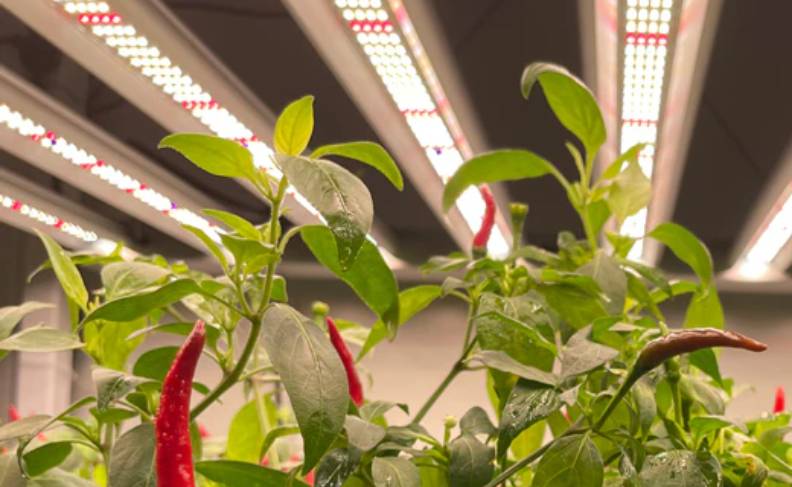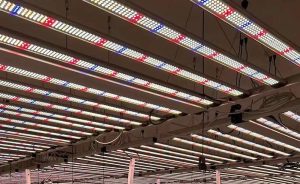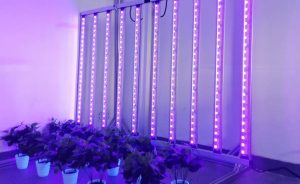
The Complete Beginner’s Guide to LED Grow Lights: Everything You Need to Know Before You Buy
Indoor gardening has revolutionized how we grow plants, providing year-round cultivation opportunities regardless of climate or available outdoor space. At the heart of this revolution are LED grow lights, which have rapidly become the preferred choice for both hobby growers and commercial cultivators. If you’re new to indoor growing or considering upgrading your setup, this comprehensive guide will walk you through everything you need to know about LED grow lights.
What Are LED Grow Lights and Why Choose Them?
LED (Light Emitting Diode) grow lights are specialized light fixtures designed to stimulate plant growth by emitting light wavelengths that mimic natural sunlight. Unlike traditional growing lights such as High-Pressure Sodium (HPS) or Metal Halide (MH), LED technology offers several significant advantages:
Energy Efficiency
LED grow lights consume significantly less electricity than traditional options—up to 60% less than HPS lights with comparable output. This translates to substantial savings on your electricity bill, especially for long-term growing operations.
Targeted Spectrum
Modern LED grow lights provide precisely calibrated light spectrums that can be tailored to different stages of plant growth. This spectrum optimization allows plants to photosynthesize more efficiently, resulting in healthier growth and higher yields.
Reduced Heat Output
LED fixtures generate considerably less heat than HPS or MH lights, reducing the risk of heat stress on your plants and minimizing the need for additional cooling equipment in your growing space.
Longer Lifespan
Quality LED grow lights, like our Titan series, offer lifespans exceeding 50,000 hours—that’s over five years of continuous operation. This longevity makes them a cost-effective investment despite their higher initial purchase price.
Understanding Light Spectrum and Why It Matters
Plants respond differently to various light wavelengths, which is why spectrum considerations are crucial when selecting an LED grow light:
Blue Light (400-500nm)
Blue wavelengths promote vegetative growth, encouraging strong stems, compact growth patterns, and lush foliage. This spectrum is particularly important during the early stages of plant development.
Green Light (500-600nm)
While plants reflect much of the green spectrum (which is why they appear green to our eyes), these wavelengths still contribute to photosynthesis and help light penetrate deeper into the canopy.
Red Light (600-700nm)
Red wavelengths are essential for flowering and fruiting stages, triggering hormone responses that promote bud development and fruit production.
Far-Red Light (700-750nm)
These wavelengths enhance the Emerson Effect, improving overall photosynthetic efficiency when combined with red light.
UV Light (280-400nm)
Ultraviolet light can stimulate the production of protective compounds in plants, potentially increasing resin production, essential oils, and trichome development in certain species.
Key Metrics to Consider When Buying LED Grow Lights
Understanding these technical specifications will help you make an informed decision:
Wattage
The actual power consumption of the fixture, measured in watts. This determines your electricity usage and gives a general indication of the light’s intensity. However, wattage alone doesn’t tell the complete story—efficiency matters more.
PPF (Photosynthetic Photon Flux)
Measured in micromoles per second (μmol/s), PPF indicates the total amount of photosynthetically active photons emitted by the light each second. This is a more accurate measure of a light’s growing power than wattage.
PPFD (Photosynthetic Photon Flux Density)
Measured in micromoles per square meter per second (μmol/m²/s), PPFD tells you how many photosynthetically active photons actually reach your plants. Different plants have different PPFD requirements, generally ranging from 200-400 μmol/m²/s for leafy greens to 600-900+ μmol/m²/s for high-light crops like tomatoes or cannabis.
Efficiency (PPF/W)
This metric, measured in μmol/J, indicates how efficiently the fixture converts electricity into usable light for your plants. Higher values mean more light output per watt consumed—our Titan series lights achieve an impressive 2.8 μmol/J efficiency.
Coverage Area
The effective growing area that the light can adequately illuminate. This specification is crucial for matching the light to your growing space.
Matching Your LED Grow Light to Your Growing Space
Selecting the right size and power for your growing area is essential for successful indoor cultivation:
Small Spaces (2ft x 2ft / 60cm x 60cm)
For compact grow tents or small shelving units, a light like our Titan Start 300 (320W) provides ideal coverage and intensity for 2-4 plants.
Medium Spaces (4ft x 2ft / 120cm x 60cm)
For standard home grow tents, the Titan Start 300 offers perfect coverage for vegetative growth and moderate-light plants.
Standard Grow Tents (4ft x 4ft / 120cm x 120cm)
The Titan Grow 700 (700W) or Titan Grow 900 (900W) provides optimal coverage for 4-9 plants in a standard 4×4 tent, delivering professional-grade light intensity throughout the canopy.
Larger Spaces (5ft x 5ft / 150cm x 150cm)
For larger areas, the Titan Nitro 1000W delivers exceptional coverage and intensity suitable for commercial-level cultivation.
Essential Features to Look For
When investing in LED grow lights, these features can significantly enhance your growing experience:
Full-Spectrum Capability
Choose lights that offer a complete spectrum from blue to red, including UV and far-red when possible. This comprehensive light recipe supports plants through all growth stages.
Dimming Functionality
Adjustable intensity allows you to customize light levels for different growth stages and plant varieties, saving energy and preventing light stress.
Quality Diodes
Premium diodes from manufacturers like Samsung (used in our Titan series) ensure consistent performance and longevity.
Aluminum Heat Sinks
Proper thermal management is crucial for LED longevity and performance. Look for fixtures with robust aluminum heat sinks that efficiently dissipate heat.
Modular Design
Expandable systems allow you to start small and scale up as your growing operation expands.
Warranty Coverage
A substantial warranty period (like our 3-5 year coverage) indicates the manufacturer’s confidence in their product’s durability.
Installation and Setup Best Practices
Setting up your LED grow light correctly maximizes its effectiveness:
Optimal Hanging Height
Generally, LED grow lights should be positioned 18-24 inches above seedlings and 12-18 inches above mature plants. Always refer to the manufacturer’s recommendations for your specific model.
Light Distribution
Ensure even coverage across your growing area by positioning the light centrally and using reflective materials on walls to minimize light loss.
Light Cycles
Most vegetative plants thrive under 18 hours of light and 6 hours of darkness, while flowering plants typically require 12 hours of light and 12 hours of darkness. Using a timer ensures consistent light cycles.
Gradual Acclimation
Introduce new plants to intense LED lighting gradually to prevent light stress, starting with shorter exposure periods or higher hanging distances.
Conclusion: Investing in Your Growing Success
Choosing the right LED grow light is one of the most important decisions you’ll make as an indoor gardener. While quality LED fixtures represent a significant initial investment, their energy efficiency, spectrum optimization, and longevity make them the most cost-effective and performance-oriented choice for serious growers.
Our Titan series LED grow lights combine cutting-edge technology with user-friendly design, providing the perfect lighting solution for growers of all experience levels. From the entry-level Titan Start 300 to the commercial-grade Titan Nitro 1000W, each model delivers exceptional performance backed by our comprehensive warranty and customer support.
Ready to experience the difference that premium LED technology can make in your indoor garden? Explore our complete collection of grow lights and take the first step toward professional-quality results in your growing space.
Have questions about which LED grow light is right for your specific plants or growing environment? Contact our expert team for personalized recommendations tailored to your needs.


No Comments